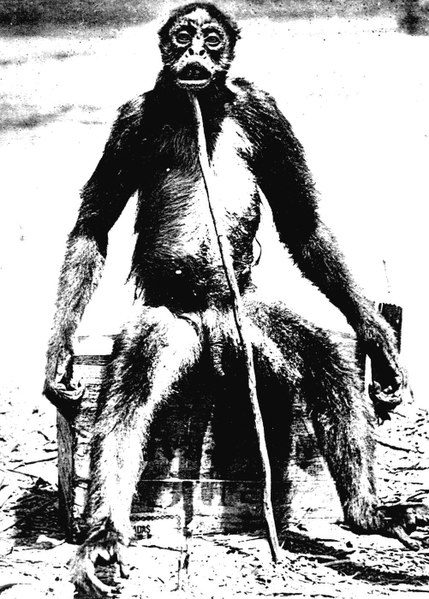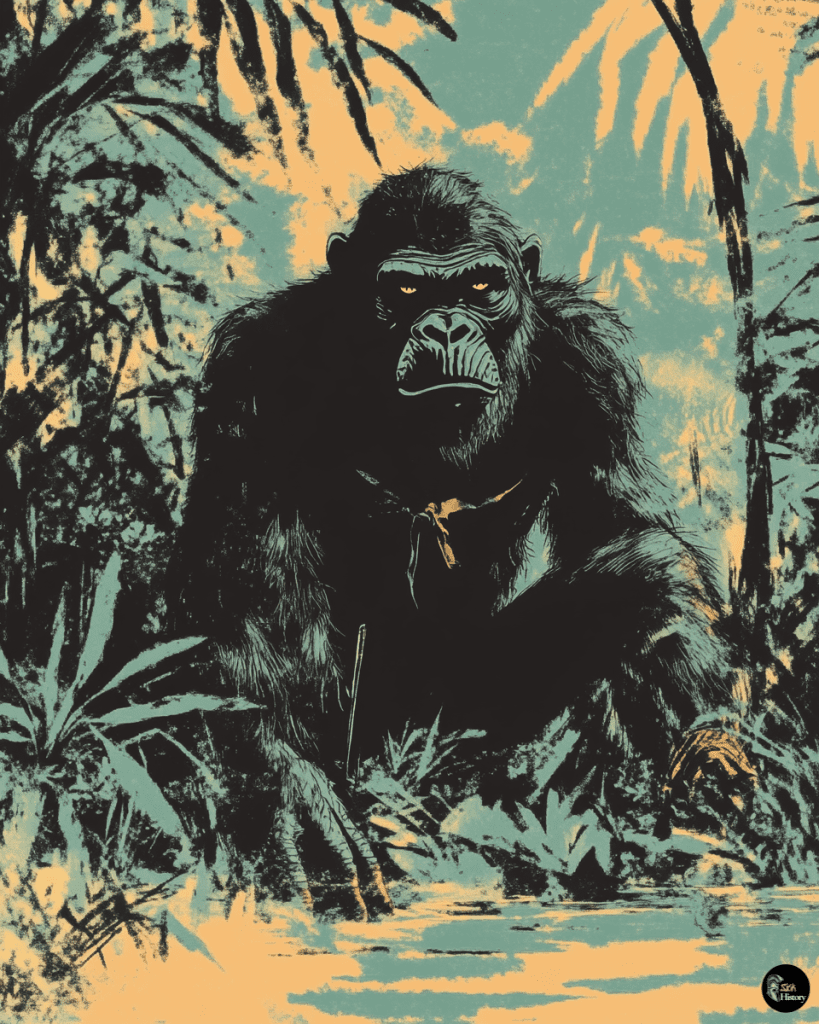Few tales in the archives of cryptozoology captivate the imagination quite like the enigma of De Loys’ Ape. This intriguing story began in 1920 when François De Loys, a Swiss geologist, embarked on an expedition to the jungles of South America.
What transpired during this journey would spark decades of debate and fascination among researchers and enthusiasts alike.
The heart of the mystery lies in a single photograph, purportedly depicting a large, tailless primate that De Loys claimed to have encountered near the Tarra River. This image, which surfaced in 1929, ignited speculation about the existence of an unknown ape species in the Americas. The creature was given the scientific name Ameranthropoides loysi in honor of its alleged discoverer.
The tale of De Loys’ Ape weaves together elements of adventure, scientific inquiry, and controversy. As the story unfolded, it became a touchstone for discussions about the boundaries of zoological knowledge and the nature of evidence in cryptozoology.
Whether viewed as a genuine discovery or a carefully crafted hoax, the legend of this mysterious primate continues to intrigue those who delve into the unexplored corners of natural history.
François De Loys and the Jungle of Mystery
François De Loys, a Swiss geologist, ventured into the South American wilderness in 1920, setting the stage for one of cryptozoology’s most intriguing tales. His expedition along the Tarra River and encounters in the jungle would spark decades of debate and fascination.
The Tale of De Loys’ Ape
In 1929, a photograph emerged that would captivate the scientific community. It showed a strange, tailless primate propped up on a crate in the jungle. This creature, dubbed “De Loys’ Ape,” became the center of a controversy that persists to this day.
De Loys claimed to have encountered and photographed an unknown species of primate during his expedition. The creature, reportedly standing over 5 feet tall, appeared to be a missing link between humans and other apes.
Anthropologist George Montandon named the species Ameranthropoides loysi, fueling speculation about its authenticity. However, skeptics soon emerged, questioning the validity of De Loys’ claims.

Expedition Along the Tarra River
De Loys’ journey through the Venezuelan jungle was fraught with challenges. His team navigated treacherous terrain, battling disease and hostile indigenous tribes.
The Tarra River, a tributary of the Catatumbo, served as their primary route through the dense forest. It was along this waterway that De Loys claimed to have made his startling discovery.
The expedition’s primary goal was oil prospecting, but De Loys’ background as a geologist led him to document the region’s flora and fauna. This scientific approach lent credibility to his later claims.
Encounters in the South American Wild
De Loys reported several encounters with unusual wildlife during his expedition. The most notable, of course, was the alleged ape-like creature.
According to his account, two of these beings approached the camp aggressively. In the ensuing confrontation, one was killed, providing De Loys the opportunity to photograph it.
The jungle’s biodiversity amazed the explorers. They encountered spider monkeys, which later played a crucial role in debunking the Ameranthropoides loysi claim.
Debate and Legacy
The De Loys’ Ape incident sparked intense discussions within scientific circles and the public imagination. Its impact on cryptozoology and anthropological research fascinates scholars and enthusiasts alike.
Controversy and Claims of Hoax
The authenticity of De Loys’ Ape became a subject of heated debate. Critics argued that the photograph was manipulated, suggesting it was merely a common spider monkey. They pointed out inconsistencies in the story and questioned the lack of additional evidence.
Skeptics noted the convenient absence of the creature’s tail in the image. This omission fueled suspicions that the tail had been deliberately hidden to make the animal appear more humanoid.
The scientific community largely dismissed the claim of a new primate species. Many experts believed the incident was an elaborate hoax designed to gain attention or support controversial theories about human evolution.
Ameranthropoides Loysi: Fact or Fiction?
The creature, dubbed Ameranthropoides loysi, never gained official recognition in zoological circles. Researchers argued that its physical characteristics closely matched those of known spider monkey species.
Despite the skepticism, some cryptozoology enthusiasts continued to believe in its existence. They cited the reported size of the animal, which was said to be larger than typical New World monkeys, as evidence of its uniqueness.
The debate surrounding Ameranthropoides loysi highlighted the challenges of verifying extraordinary claims in remote locations. It also underscored the importance of rigorous scientific documentation in such cases.
Cryptozoology and The Illustrated London News
The publication of De Loys’ photograph in The Illustrated London News in 1929 catapulted the story into the public eye. This exposure was crucial in cementing the creature’s place in cryptozoological lore.
The incident became a cornerstone of cryptozoology, inspiring countless debates and investigations. It fueled interest in the possibility of undiscovered primates in South America’s dense jungles.
The Illustrated London News’ involvement demonstrated the power of media in shaping public perception of scientific claims. It highlighted the delicate balance between sensationalism and scientific reporting.
The Influence of Swiss Geologist George Montandon
George Montandon, a Swiss anthropologist, was pivotal in promoting the De Loys’ Ape story. He presented the photograph and accompanying narrative to the scientific community, lending credibility to the claim.
Montandon’s involvement raised questions about the motivations behind the incident. Some scholars suggested he used the story to support his controversial theories on human evolution and racial classification.
The De Loys’ Ape affair ultimately tarnished Montandon’s reputation in scientific circles. It served as a cautionary tale about the dangers of sensationalism and the importance of maintaining scientific integrity.

